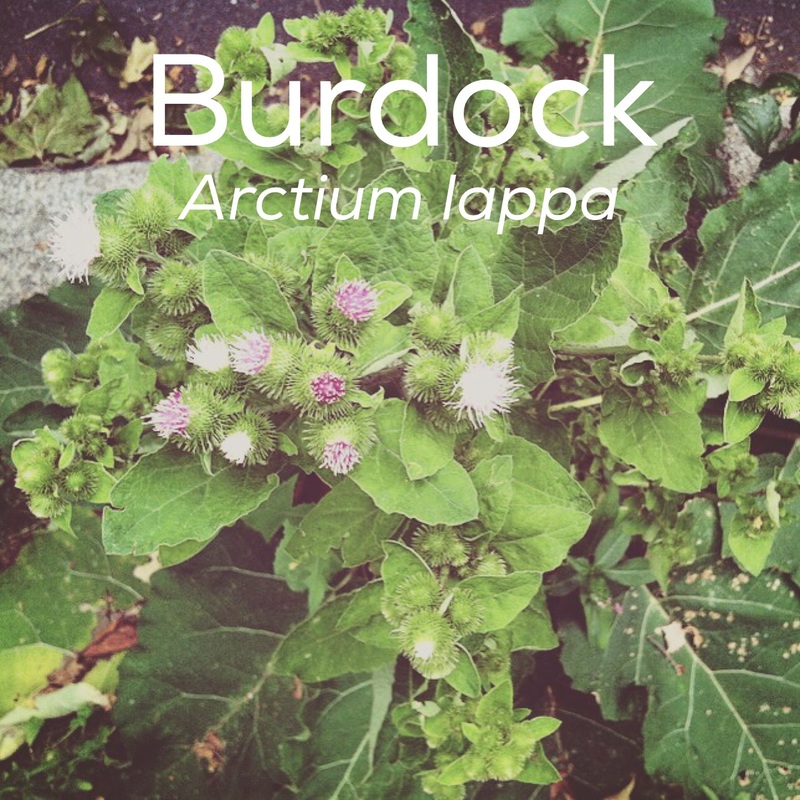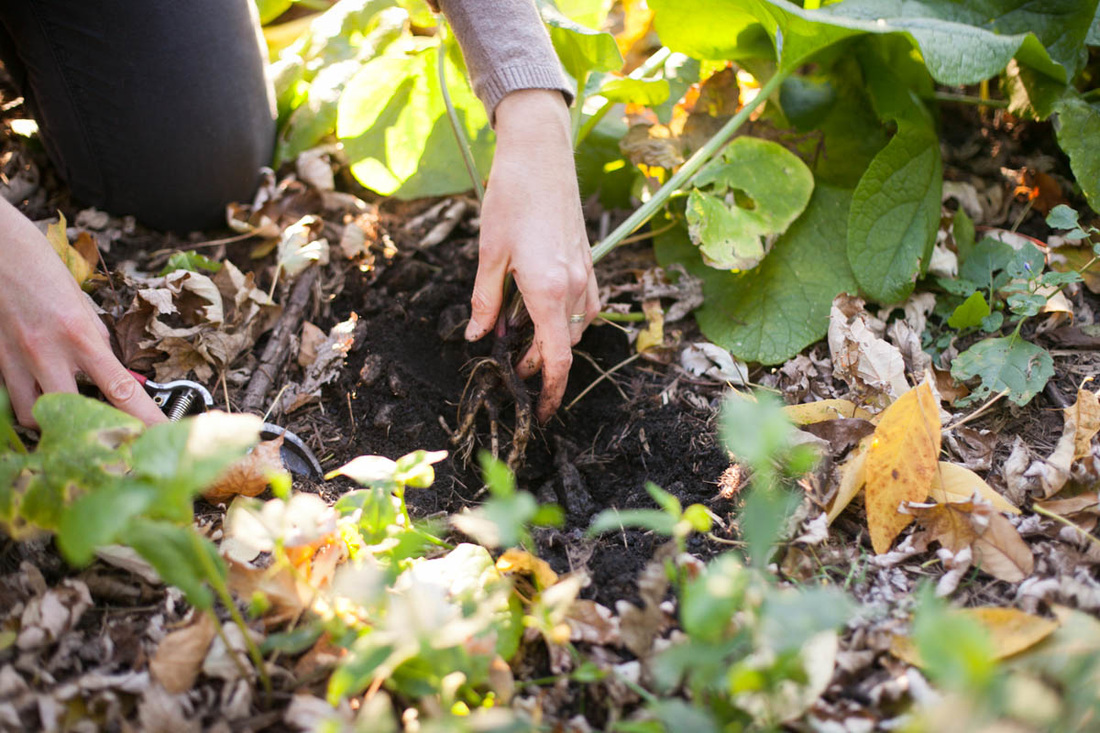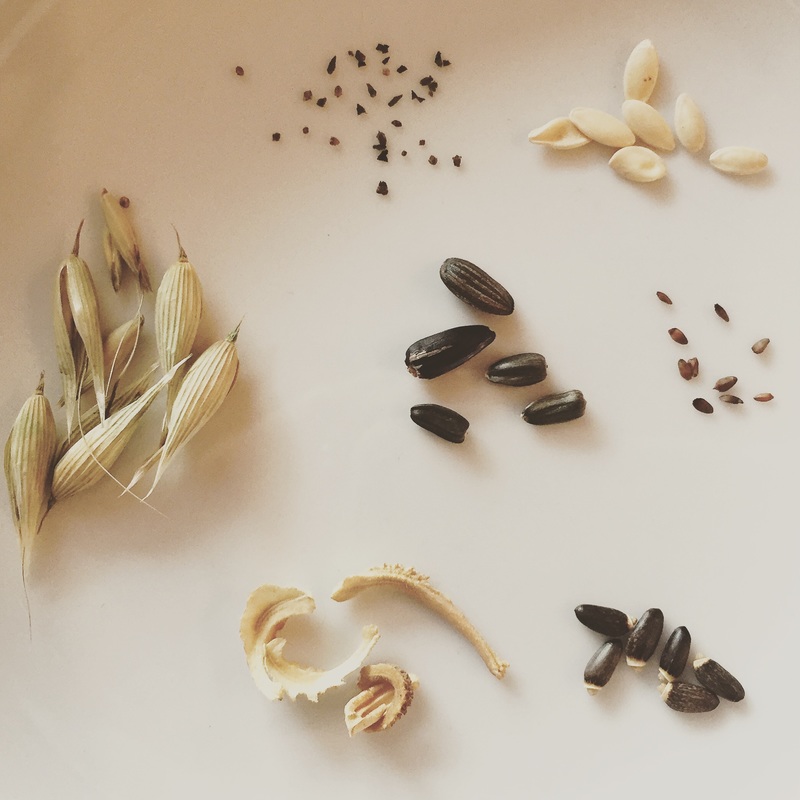|
Burdock is a beautiful, large-leafed plant that pops up in areas where humans live. You’ve seen it growing around our city environs in Cambridge and Somerville — I’m certain of it! Burdock is generally called a “weed” since it likes to grow in places where it was not planted. Often overlooked, it is actually quite a lovely plant, when you take the time to admire it. The bright magenta flowers could easily be mistaken for a kind of thistle, and burdock is, in fact, closely related to thistles (a part of the Asteraceae family). The flowers are covered with prickly burrs, which interestingly were the inspiration behind the invention of Velcro! Get close to some of these clingy flowers and seed heads and you will see what I mean… Burdock is a resourceful creature and can thrive in places where many other plants cannot. Part of its tenacity and strength is due to its long taproot, which burrows deeply down into the earth. With this advantage burdock can reach precious micro-nutrients that are often inaccessible to shallow-rooted plants. Herein lies much of burdock’s goodness: Because of its deep earth diving, the roots contains many nutrients and minerals, as well as inulin, a special kind of storage carbohydrate (prebiotic). Inulin happens to be wonderful for the human digestive tract because it feeds and nourishes our beneficial gut flora. Taking burdock root is a good idea when there is any sort of digestive issue, especially when the good gut flora needs some support. When taken as food, tea or tincture, burdock (slowly) acts upon the digestion and liver. It helps the system to better digest, and assimilate fats and oils — these are then more easily distributed to the skin, hair and internal tissues. Burdock is often a popular choice for helping resolve any sort of eruptive skin problem such as acne, rashes, or eczema. I will often pair it with red clover to help support the removal of waste products that may be improperly eliminating through the skin instead of through other channels. Traditionally this cleansing action led burdock to be known as a “blood purifier” because it helps to detoxify the body and blood by stimulating the release of waste products from the cells.
Burdock root is a gentle and nutritive tonic that helps to restore one’s natural energy and to overcome states of depletion. Not that long ago it was also used as a natural aphrodisiac! However, one important thing to know about burdock is that although it can have a very deep and profound effect on the body, it works slowly and must be taken with consistency over time. A few doses of burdock will not do the trick — this is an herb that needs to be used with commitment over several months. In exchange it will show you its ability to nourish depleted bodies, provide increased energy, and improve the function of the digestive system. Judith Berger — one of my favorite herbal writers — states, “The root’s style is almost tortoise-like as it patiently wades through tired organs, pulling poisons, chemical residues, and contaminants which slow down the lymphatic, digestive, and urinary organs.” If you are looking to harvest your own burdock once the growing season returns, keep in mind that it is a biennial. Be sure to gather one-year-old plants in the fall, or two-year-old plants in the spring, i.e., any time before it has flowered. You want the energy of the root to still be underground rather moving upwards into the flowers and seeds. HOW TO USE BURDOCK: There are many ways to enjoy the sweet and earthy taste of burdock. You can eat the fresh or cooked roots, take it as a tincture, or drink it as a tea. If taking it as a tea, it will need to be simmered on the stove in order to draw out all of its benefits. Add 1 heaping tablespoon of the dried root to 1.5 cups of water in a small saucepan. Bring to a boil, then reduce to a simmer, cover with a lid, and let this cook for 15 to 20 minutes. Then strain and drink. Another wonderful way to use nutritive burdock root is to steep it in apple cider vinegar. Vinegar is an excellent medium for drawing out the mineral contents of plants. Place 2 to 3 tablespoons of the dried root (or twice this amount of the chopped fresh root) in an 8 oz. glass jar. Cover with apple cider vinegar and let this mixture steep at room temperature for 2 to 3 weeks. Then strain out the roots, place the remaining liquid in a clean, dark bottle, and use this earthy mixture on vegetables or salads. I like to store my herbal vinegars in the fridge for the longest shelf life. Use this up within 6 months. This post was originally published on Cambridge Natural's blog. At this time of year I always think about seeds. I imagine the many multitude of seeds lying just below the surface, safe and quiet in their dark bed of soil. They are right below us, waiting and resting.
Seeds have an especially timely message to share with us. They ask us to remember what power there is in stillness and darkness, in rest and inactivity. Without this period of dormancy the seeds would not be able to burst out of their shells and emerge through the soil. Without the underground rest and darkness they would not be able to flourish in the spring. Most of us find it very difficult to have periods of true rest. There is too much that calls our attention, so much that needs "doing." But perhaps in some small, simple ways you can carve out a few moments of each day to be still like a seed. See if you can become more aware of all the inner parts of yourself that need nurturing, especially those parts that are resting and waiting until it is time to be expressed. Like a seed, think about what beauty you want to bring into the world, when the timing is right. What do you need to nurture in yourself now so that you can emerge more fully when spring arrives? |
Categories
All
Archives
January 2022
|


